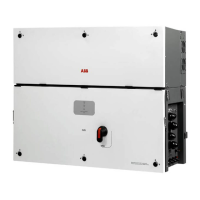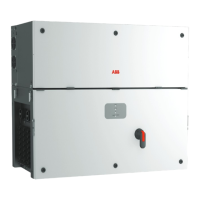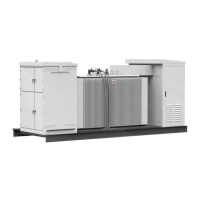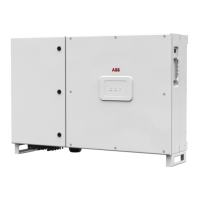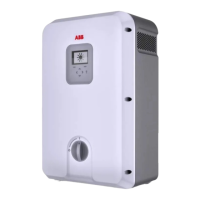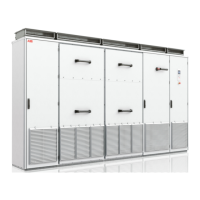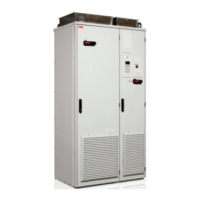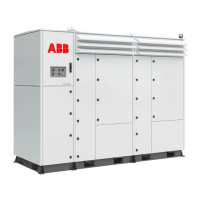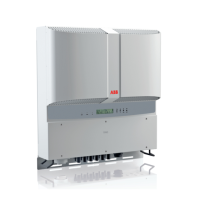159Maintenance
EN
- Error code
- Error message
- LED status
Name of Alarm and Cause Solution
- E004
- Bulk OV
- Yellow LED
“Bulk” over-voltage (DC-DC circuit):
Error inside the inverter. The alarm is raised when
the voltage at the heads of the bulk capacitors
exceeds the Over Voltage threshold (internal
unchangeable threshold).
• The alarm may be triggered by causes external to
the inverter:
- An excessive input voltage can be recorded as a
condition for bulk over voltage. In this case it is
advisable to check the inverter's input voltage and
should this value be close to the input OV
threshold, review the configuration of the
photovoltaic generator.
- Excessive grid voltage could cause the bulk
voltage to rise in uncontrolled fashion with a
consequent protection intervention and hence
generation of the alarm. In these cases the alarm is
transitory and the inverter automatically restarts
- The alarm may be triggered by causes inside the
inverter and in this case it is necessary to contact
customer assistance.
- E005
- Internal error
- Yellow LED
Communication error inside the inverter:
The alarm occurs when there are communication
problems between the control devices inside the
inverter.
• Error inside the inverter and cannot be checked
externally.
- If the problem persists (once the inverter has
been switched off and back on again), contact
customer assistance.
- E006
- Output OC
- Yellow LED
Output overcurrent:
The alarm occurs when the inverter's output current
exceeds the inverter's threshold for maximum
output current.
• Error inside the inverter and cannot be checked
externally.
- If the problem persists (once the inverter has
been switched off and back on again), contact
customer assistance.
- E007
- IGBT Sat
- Yellow LED
Saturation recorded on the IGBT components:
The alarm appears when one of the active devices of
the inverter is in saturation state.
Once the error appears, the inverter attempts to
resume normal operation.
- Should the error occur sporadically, it may be
caused by a brusque transition of the grid voltage
or of the input voltage, but is not due to a
malfunction by the inverter.
- If the error is connected to an internal fault, it will
continue to appear and so it is necessary to
contact customer assistance.
- E009
- Internal error
- Yellow LED
Error inside the inverter:
Error inside the inverter
• Error inside the inverter and cannot be checked
externally.
- If the problem persists (once the inverter has
been switched off and back on again), contact
customer assistance.
- E010
- Bulk UV
- Yellow LED
Low “Bulk” voltage (DC-DC circuit):
The alarm can be caused by causes external to the
inverter: a reduced input voltage on the inverter
(just above the activation voltage) but which is not
accompanied by a sufficient availability of power
from the photovoltaic generator (typical condition
of the stages with limited irradiation)
- If the error signal occurs sporadically, it may be
due to causes external to the inverter (limited
irradiation and so limited power availability from
the PV generator).
- If the problem occurs systematically even in
conditions of high irradiation and with input
voltage which is significantly higher than the
activation voltage, contact customer assistance.
- E011
- Ramp Fault
- Yellow LED
Long wait for “Booster” regime to start:
Error internal to inverter relating to start up time for
DC-DC circuit regime (Booster)
• Error inside the inverter and cannot be checked
externally.
- If the problem persists (once the inverter has
been switched off and back on again), contact
customer assistance.
- E012
- Internal error
- Yellow LED
Error in the “Booster” circuit (DC-DC side) recorded
by the “Inverter” circuit (DC-AC side):
Error inside the inverter regarding the operation of
the DC-DC circuit part (Booster).
• Error inside the inverter and cannot be checked
externally.
- If the problem persists (once the inverter has
been switched off and back on again), contact
customer assistance.
- E014
- Over temp.
- Yellow LED
Excessive temperature inside the inverter:
External temperature over 60°C. This parameter also
depends on the power which the inverter must
supply since the measurement of temperatures is
done internally and is influenced by the heat
dissipated by the components of the inverter itself
• Check that the inverter is not exposed to direct
sunlight. Wait for the temperatures to which the
inverter is exposed to return to the operating
range and for the inverter to cool down.
- If the problem persists (once the ambient
temperature has returned to within the range),
contact customer assistance. You must remember
to wait for the time necessary to allow the inverter
to cool down.
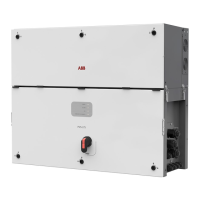
